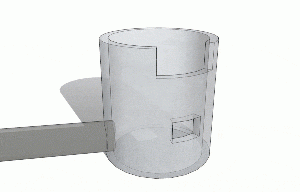Difference between revisions of "Flow through riser"
Jump to navigation
Jump to search
Jenny Hill (talk | contribs) m |
Jenny Hill (talk | contribs) m |
||
| Line 28: | Line 28: | ||
*''A<sub>o</sub>'' = the cross-sectional area of the orifice in m<sup>2</sup>, | *''A<sub>o</sub>'' = the cross-sectional area of the orifice in m<sup>2</sup>, | ||
*}} | *}} | ||
| + | |||
| + | ==For review== | ||
| + | https://www.hydrologystudio.com/no-fail-detention-pond-design/ | ||
Revision as of 22:43, 20 November 2018
There are many configurations for multistage risers according to the flow control requirements. It is easiest to begin downstream and design with the the highest return period required in mind. e.g. start by specifying the pipe/culvert component to control the 100 year flow. Then to work backwards to size the lip or weir at the top of the structure to meet the next return period flow.
The riser is then designed with flow through one or more orifices.
Where:
- Z = the depth of ponded water in m,
- Z0 = the elevation of the bottom of the orifice in m,
- H0 = the height of the orifice in m,
- Z1 = the elevation of the weir in m,
- Cw = the weir coefficient,
- Lw = the length of the weir in m,
- Cd = the discharge coefficient of the orifice (often defaulted to 0.6 for a sharp edged orifice),
- Ao = the cross-sectional area of the orifice in m2,
For review
https://www.hydrologystudio.com/no-fail-detention-pond-design/

